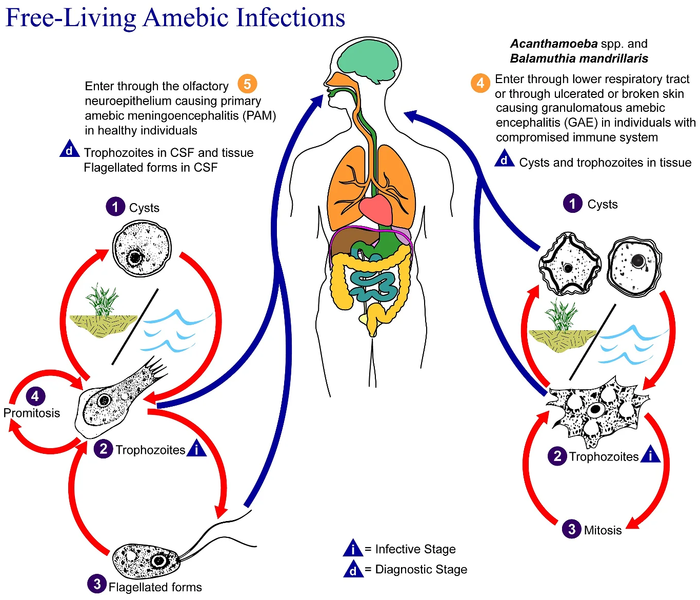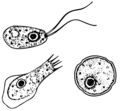ملف:Free-living amebic infections.png

حجم هذه المعاينة: 700 × 600 بكسل. الأبعاد الأخرى: 280 × 240 بكسل | 560 × 480 بكسل | 896 × 768 بكسل | 1٬195 × 1٬024 بكسل | 1٬365 × 1٬170 بكسل.
الملف الأصلي (1٬365 × 1٬170 بكسل حجم الملف: 715 كيلوبايت، نوع MIME: image/png)
تاريخ الملف
اضغط على زمن/تاريخ لرؤية الملف كما بدا في هذا الزمن.
| زمن/تاريخ | صورة مصغرة | الأبعاد | مستخدم | تعليق | |
|---|---|---|---|---|---|
| حالي | 09:24، 2 فبراير 2023 |  | 1٬365 × 1٬170 (715 كيلوبايت) | Materialscientist | https://answersingenesis.org/biology/microbiology/the-genesis-of-brain-eating-amoeba/ |
| 06:30، 20 يوليو 2008 |  | 518 × 435 (31 كيلوبايت) | Optigan13 | {{Information |Description={{en|This is an illustration of the life cycle of the parasitic agents responsible for causing “free-living” amebic infections. For a complete description of the life cycle of these parasites, select the link below the image |
استخدام الملف
لا توجد صفحات تستخدم هذا الملف.
الاستخدام العالمي للملف
الويكيات الأخرى التالية تستخدم هذا الملف:
- الاستخدام في de.wikibooks.org
- الاستخدام في en.wiktionary.org
- الاستخدام في fi.wikipedia.org
- الاستخدام في fr.wikipedia.org
- الاستخدام في gl.wikipedia.org
- الاستخدام في hr.wikipedia.org
- الاستخدام في is.wikipedia.org
- الاستخدام في it.wikipedia.org
- الاستخدام في pl.wikipedia.org
- الاستخدام في te.wikipedia.org
- الاستخدام في vi.wikipedia.org
- الاستخدام في www.wikidata.org
- الاستخدام في zh.wikipedia.org



